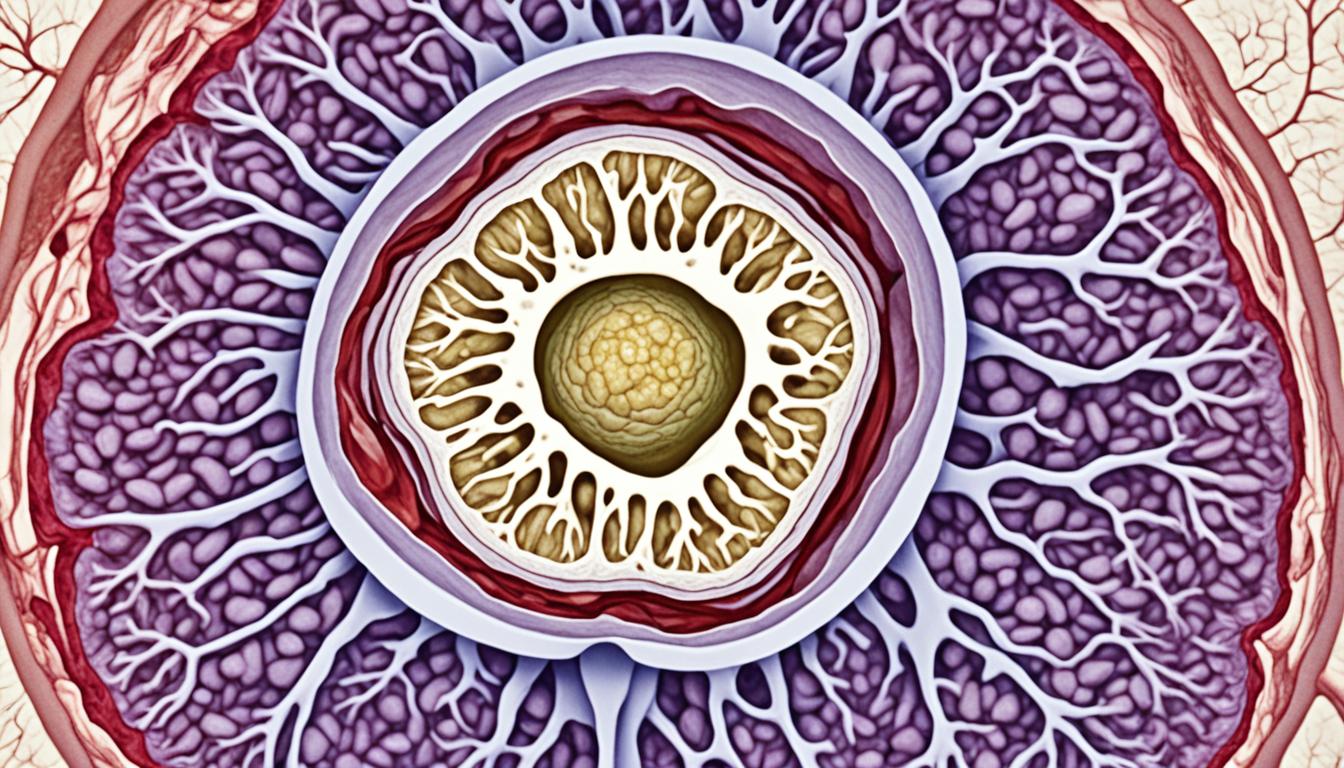A pituitary adenoma is a benign tumor growing in the pituitary gland. This gland is at the base of your brain. Tumors can be big, small, or even gigantic, depending on their size. They may also be classified as functioning or non-functioning.
Functioning tumors produce too many hormones. Non-functioning tumors, however, do not make hormones. But they can press on the gland and cause common symptoms like headaches and trouble with your sight.
Treatment for pituitary adenoma includes surgery to remove it. Some may also opt for medication to balance hormone levels. Recently, stem cell therapy has shown promise. However, it requires more study to determine its full effectiveness.
Key Takeaways:
- Pituitary adenomas are slow-growing and benign tumors that develop in the pituitary gland.
- They can be functioning or non-functioning, causing hormonal imbalances.
- Symptoms can include visual impairment, headaches, hormonal deficiencies, and symptoms related to hormone overproduction.
- Diagnosis involves imaging tests and hormone level assessments.
- Treatment options include medication, neurosurgery, and emerging stem cell therapy.
Symptoms and Diagnosis of Pituitary Adenoma
The signs of pituitary adenoma change with tumor size and if it’s making too many or too few hormones. Overproduction of prolactin might stop menstrual cycles in women. In men, it can lower testosterone. Too much growth hormone can cause acromegaly in adults, leading to excessive growth. Other signs of too many hormones are sudden weight gain, skin that bruises easily, and weak muscles. Yet, not making enough hormones can show as low sex drive, not being able to conceive, being very tired, gaining weight, and having low blood pressure. Sometimes, the tumor’s size causes issues by pressing on the brain. This can bring on problems like not seeing well on the sides, or bad headaches.
Doctors use MRIs to see the pituitary adenoma and understand its size and where it is. They also check the levels of hormones in your body. This helps them spot any imbalances.
Testing your peripheral vision is key in diagnosing pituitary adenoma. It shows if the tumor is affecting how you see things on the sides. Losing your side vision can change your life a lot. Headaches are also a major symptom. The tumor pressing on your brain causes the headaches. They can be bad and happen often.
Treatment and Management of Pituitary Adenoma
Treating pituitary adenoma depends on the symptoms and tumor details. For hormone issues, medications are used. Specialists called neuro-endocrinologists help manage this. If tumor size or growth worries doctors, neurosurgery might be needed.
This could include non-invasive methods. Surgery through the nose is possible in some situations. Another choice is stereotactic radiosurgery. It uses precise radiation to treat the tumor, harming less healthy brain tissue.
Stem cell therapy is a new alternative but needs more study for its safety and benefits.
Pituitary adenoma care means keeping an eye on hormones and imaging the tumor. Regular check-ups help catch any growth or return early. Hormone therapy might be needed to balance out hormone levels from the tumor. Patients should work with a team of experts like endocrinologists, neurosurgeons, and more. This team approach is vital for the best results and quality of life for the patient.

